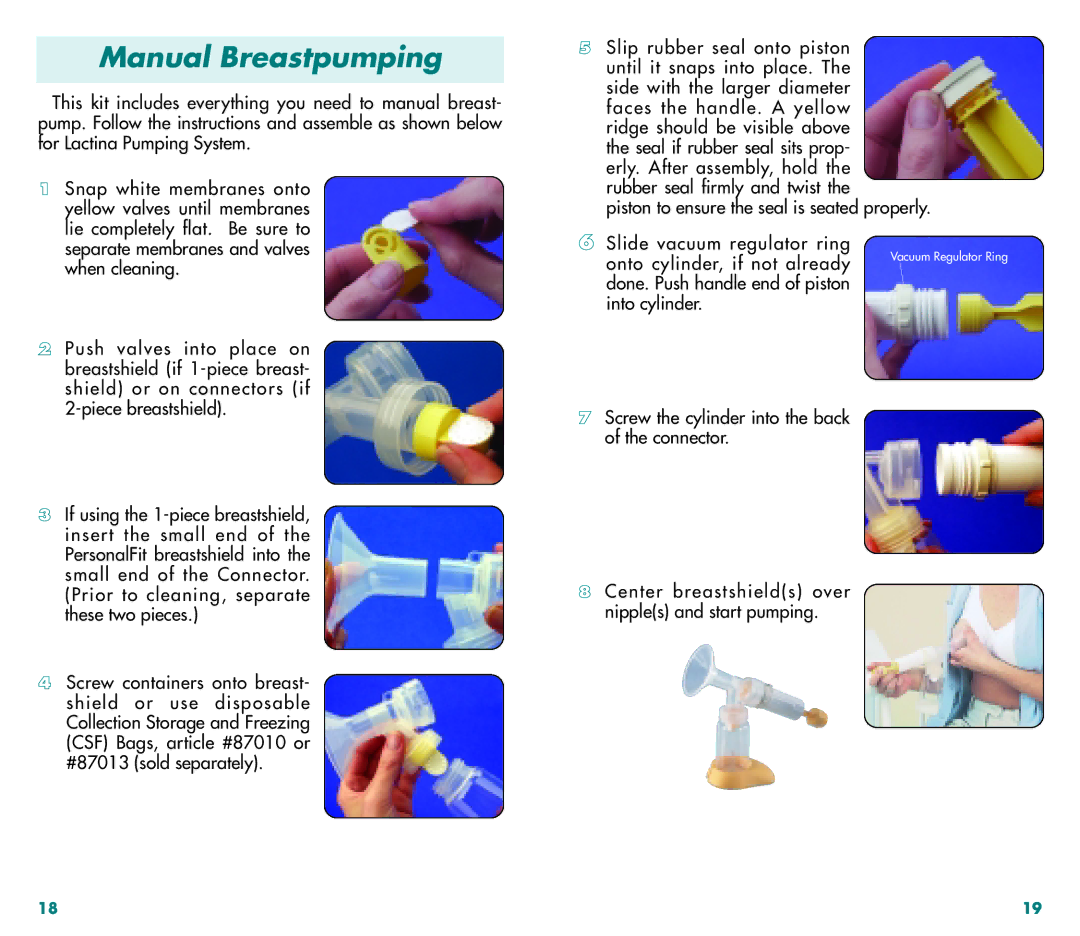Lactina and Classic Breast Pump General Instructions specifications
The Medela Lactina and Classic Breast Pumps are trusted and reliable tools for mothers who wish to nourish their infants with breast milk. Designed with efficiency and ease of use in mind, these pumps offer key features and advanced technologies that cater to the needs of breastfeeding mothers.One of the main features of the Medela Lactina and Classic Breast Pumps is their hospital-grade performance. These pumps are engineered to provide a powerful yet gentle pumping experience, which helps in maintaining or increasing milk supply. The two-phase expression technology mimics a baby's natural sucking pattern—starting with quick, light sucks to stimulate milk flow, followed by deeper, slower sucks to extract milk efficiently. This helps mothers pump more milk in less time, making the process more effective and convenient.
Portability and ease of use are also important characteristics of these breast pumps. The Lactina model is lightweight and can be operated using an AC adapter or a rechargeable battery, allowing mothers to pump discreetly and comfortably in various settings. The Classic breast pump, although slightly less portable, is appreciated for its simplicity and reliability. Both pumps feature a user-friendly interface, making it easy for mothers to adjust suction levels and settings according to their comfort.
Another important technology integrated into these pumps is the adjustable vacuum settings. Mothers can customize the level of suction to find what feels best for them, ensuring a more comfortable pumping experience. The Medela Lactina also boasts an innovative overflow protection system that prevents milk from backing up into the motor, maintaining the hygiene and durability of the pump.
Hygiene plays a crucial role in the design of Medela's breast pumps. Both the Lactina and Classic models feature a closed system, which means that the milk does not enter the tubing or the pump itself. This not only protects the pump from contamination but also simplifies the cleaning process, making it easier for mothers to maintain proper hygiene.
In summary, the Medela Lactina and Classic Breast Pumps stand out for their hospital-grade performance, two-phase expression technology, portability, comfort settings, and hygiene features. These pumps are designed to support mothers in their breastfeeding journey, making them a preferred choice for those looking to express breast milk efficiently and conveniently. Whether at home or on the go, these pumps provide the necessary support to ensure that both mothers and babies benefit from breast milk nourishment.

